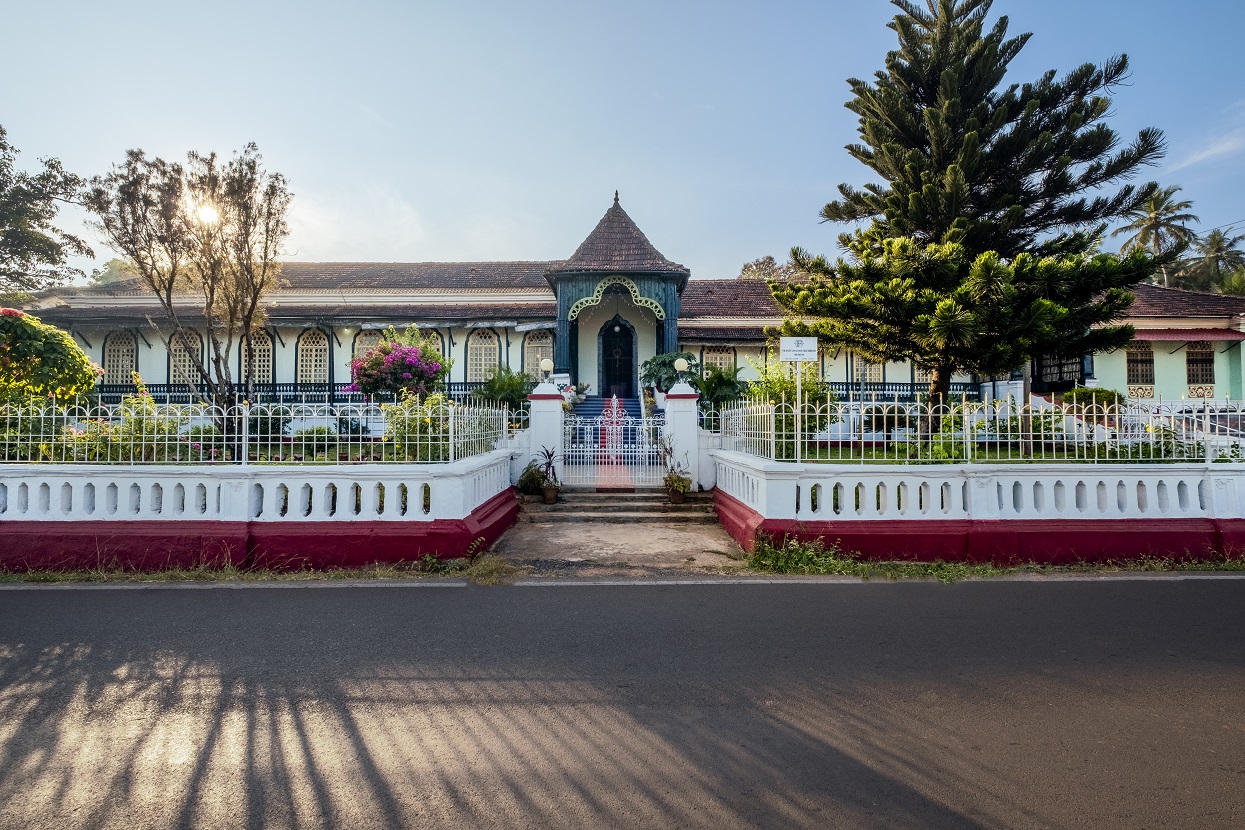

Visit to the Figueiredo House: Stepping into Goa’s colonial past
In the history of colonial India, the British will always be the dominant imperial power that ruled the subcontinent. In contrast, the Portuguese were a middling power, confined to a small part of the country, and with no overreaching political vision but with strong mercantilist and religious ambitions. They came centuries before the British, in 1510, when Afonso de Albuquerque captured Goa, and left more than a decade after them, in 1961, driven out when a newly independent India flexed its military muscle. Goa was the jewel in their Asian crown and 450 years of cultural assimilation left the small coastal state very different from the rest of India, more European than Indian in many of its cultural and social aspects.
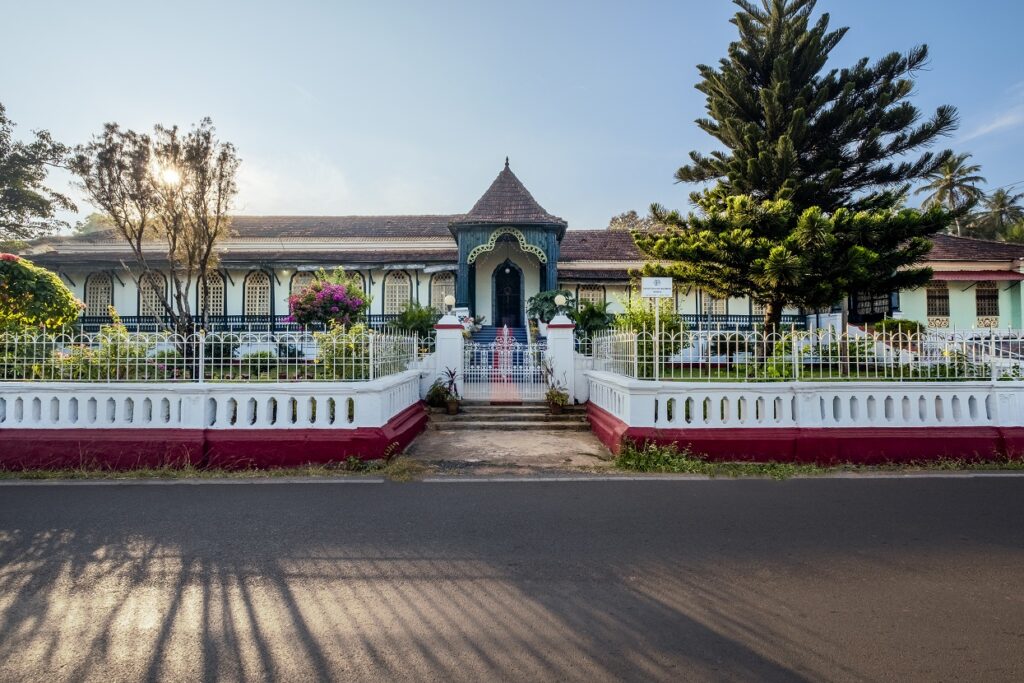

When asked why he had sailed halfway across the world to the Malabar Coast, the legendary explorer Vasco da Gama is supposed to have answered that he and his crew had come in search of “Christians and spices”. Unlike the British colonial project, the religious agenda was a pre-eminent part of the Portuguese conquest and manifested itself violently in forced mass conversions, the destruction of temples and mosques, and the prohibition of local customs.[1] Reading the writing on the wall, many Hindu families voluntarily converted to Christianity. Such was the case with the Poddiars of Sancoale who fled the devastating bubonic plague of the late sixteenth century to become the Figueiredos of Loutolim, a small village tucked away in the backwaters just a short distance from the Zuari, Goa’s longest river.
The Figueiredos prospered under Portuguese rule and the family rose to social and political prominence in Goa, counting among its members, lawyers, diplomats, and parliamentarians. Such a distinguished clan would have to have a family seat commensurate with their standing in society and thus the Figueiredo House came into being under the stewardship of the founder, Manuel João de Figueiredo, in 1590. Two hundred years later, to accommodate the growing family, the size of the mansion was doubled with the addition of another identical wing. Today, its 55 rooms lie sprawled over an impressive 7,000 square metres, offering beautiful views of the green paddy fields of Loutolim, and also the delights of a new swimming pool at the back.
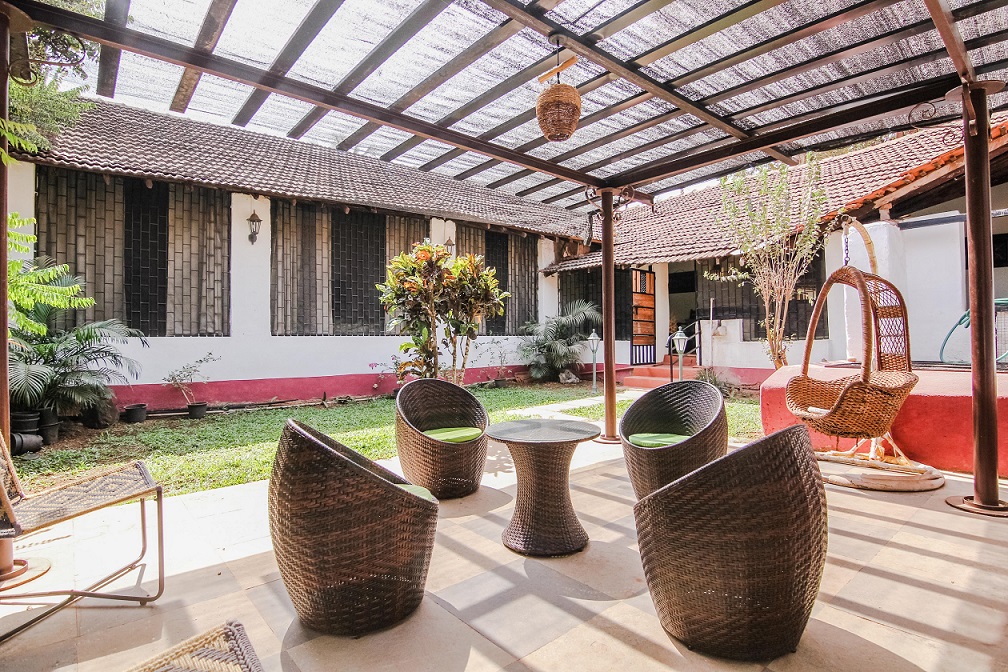

Many such stately homes are found all across Goa, but almost all are in an advanced state of decay and disrepair due to the multiple claimants who are scattered all over the globe. The Figueiredo House is one of the few exceptions thanks to the sagacity of the patriarch, Vicente João de Figueiredo, who left the house entirely to the two daughters he trusted to carry out his injunction that it be preserved for posterity as a heritage home. Both daughters have passed on and the property is now owned and managed as a museum and as a homestay by the sole surviving descendant, Fatima Figueiredo, and her son, Pedro.
My family and I were fortunate enough to spend a weekend at this magnificent estate at the invitation of Fatima in February 2021 just before the second wave hit. The homestay has seven single rooms, each one named for a member of the family, and one family suite. We stayed at the latter. Our room was spacious, with very high wooden ceilings and damask curtains draped over the beds to keep the mosquitoes away. Antique Portuguese furniture and a cavernous bathroom lined with black and white tiles completed the suite. It was like stepping back into the past and catching a glimpse of a bygone way of life.
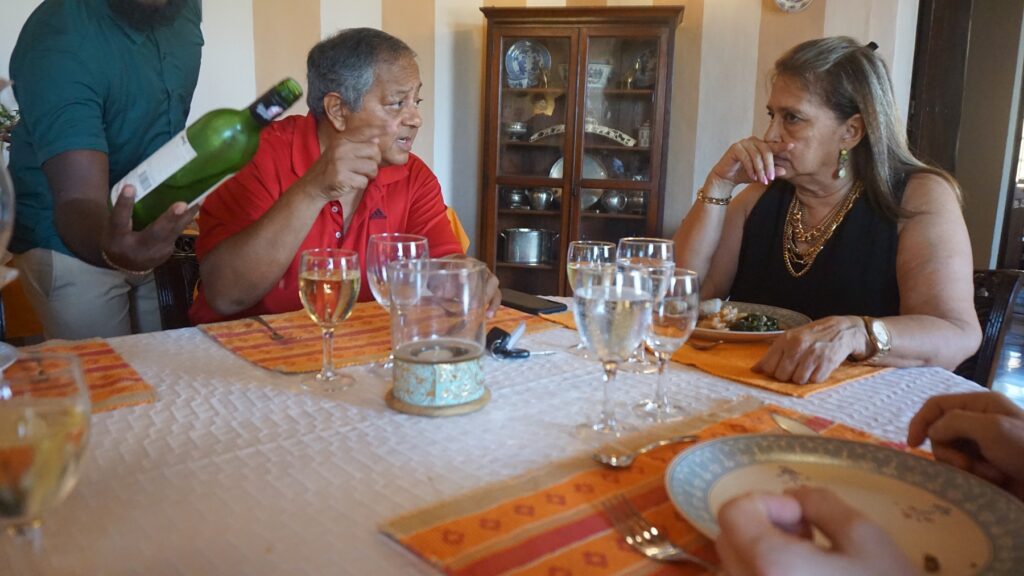

Meeting Fatima herself was an amazing experience —she is a true Força da Natureza! I marvelled at this redoubtable woman who gave up a great job and career with Estee Lauder in Lisbon in 2016 and returned to Goa to singlehandedly realise the vision of her grandfather, Vicente. As I listened to her stories of her life growing up in Goa, Brazil, Mozambique, and Portugal, and her two marriages, I came to increasingly admire her indomitable spirit and relentless focus in overcoming great obstacles to achieve her goal of refurbishing, maintaining, and opening her beautiful ancestral home to the public.
Pedro, who followed Fatima back to Goa in 2017 from Portugal where he was an industrial designer is an affable and more easy-going counterpart to his mother, and there is great affection and a strong bond between the two as keepers of the family flame. Fatima is more on her guard when you first meet her, but during our visit she gradually revealed a softer and warmer side.
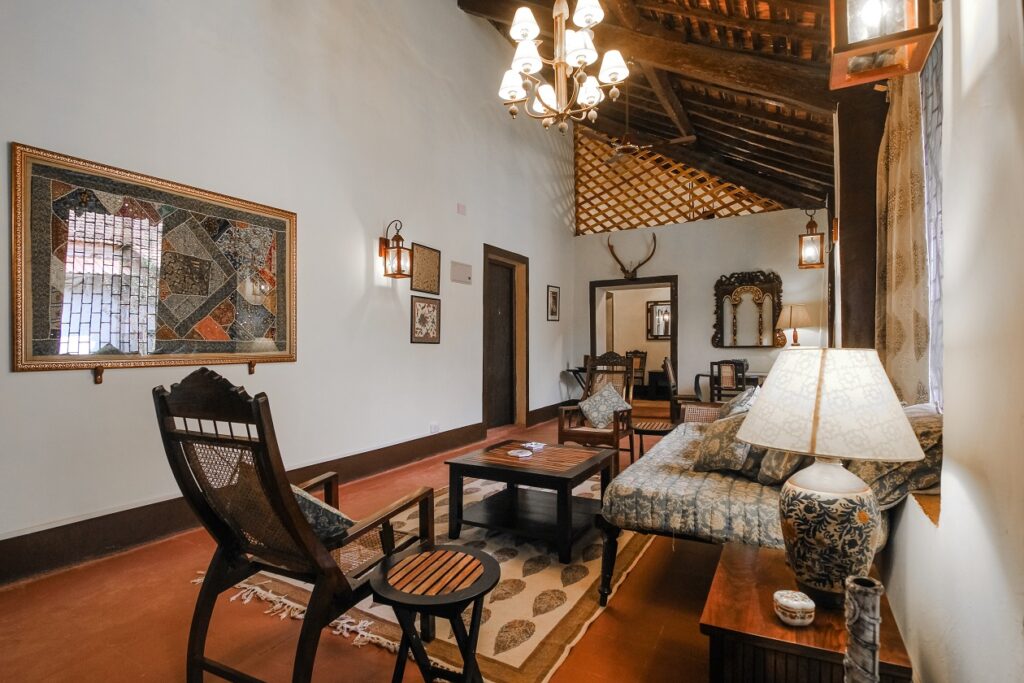

Besides regaling us with her stories, Fatima plied us with the most delicious food, served at the long dining table with great flair by two Goan waiters, Melvin and Valroy, both flaunting dyed hair and rakish hairstyles which would have left the Figueiredo ancestors in shock!
On the day we arrived, the other guests for lunch were Marco and Diana, a pleasant young diplomatic couple from Portugal. Marco had recently arrived in India to take up the post of consular head at the Embassy in New Delhi. Fatima keeps excellent relations with the Embassy and it is kind of part of the official tour for new arrivals to visit her in Goa.
We began with steaming bowls of caldo verde (meaning green soup, a Portuguese traditional dish), followed by vegetarian samosas served with a green salad of feta and tomato. The main course was a magnificent Bacalhau no forno (baked codfish Portuguese style) with sautéed potatoes and vegetables. We finished with a delicious vanilla-filled crepe covered in strawberry coulis.


Caldo verde 
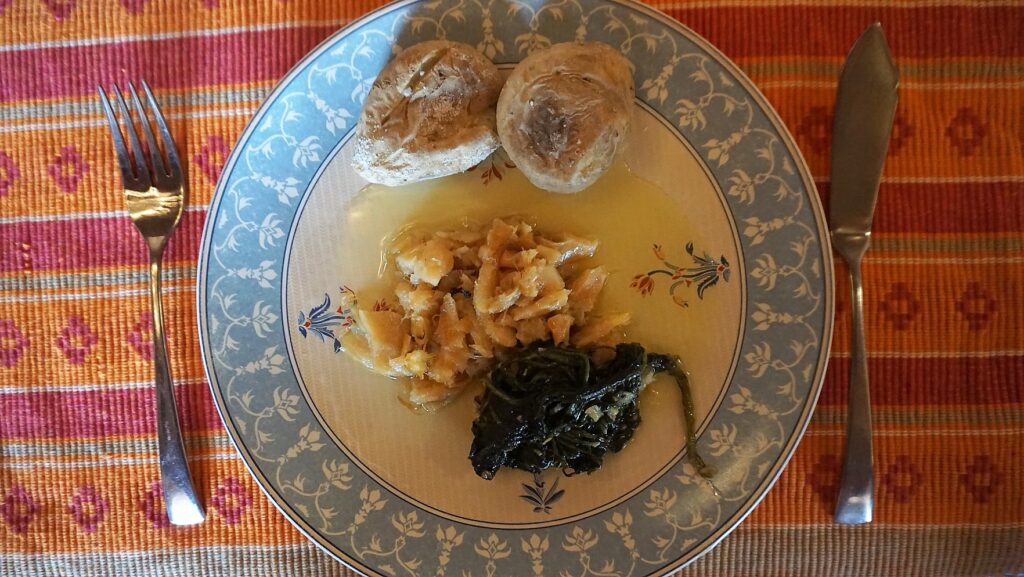
Bacalhau no forno with sautéed potatoes and vegetables 
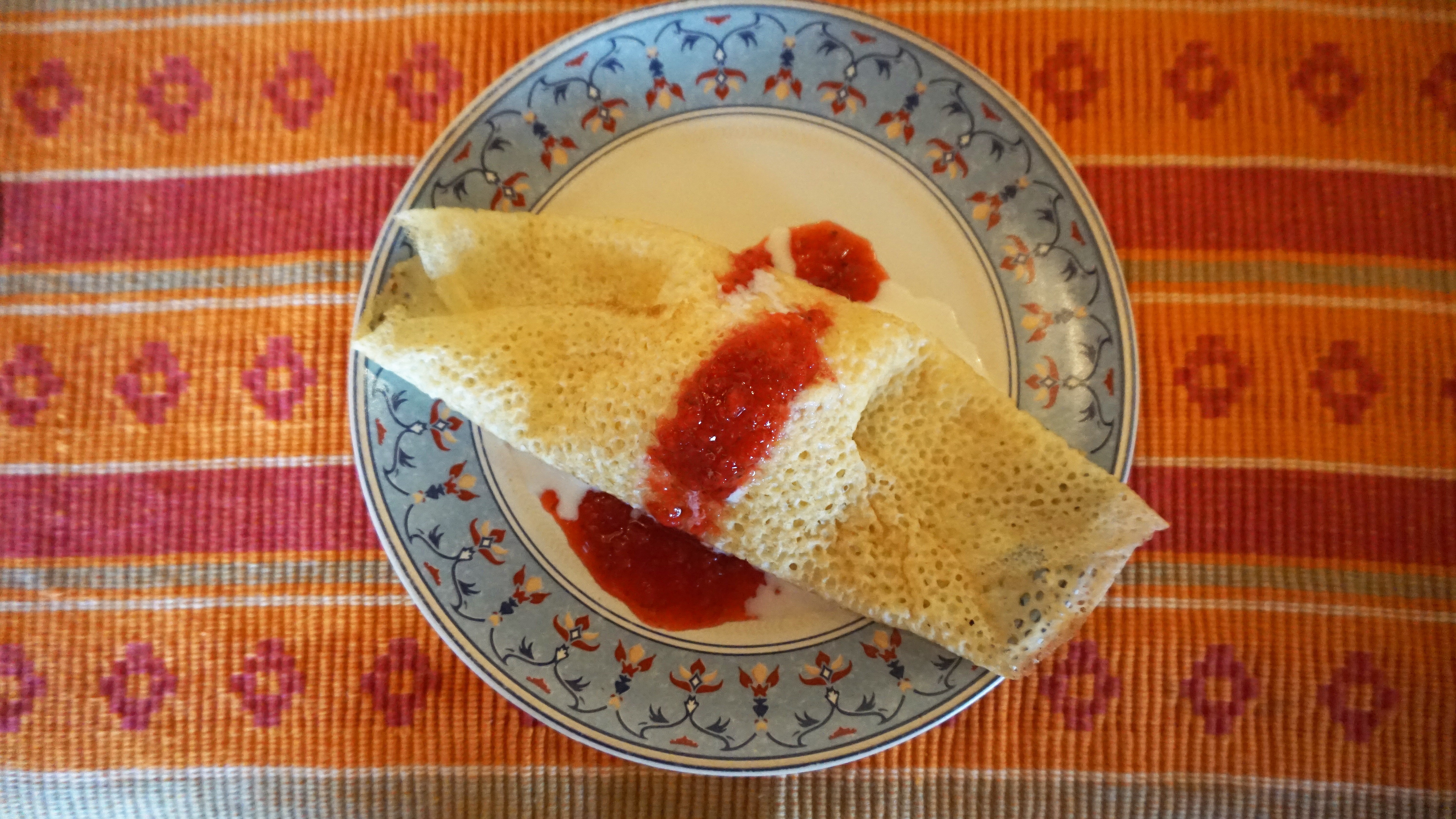
Vanilla-filled crepe covered in strawberry coulis
On our last night, Pedro gave us a personal tour of the museum wing of the Figueiredo House. We started with a quick briefing in the sala velha (“the old room”), and then wandered through gallery after gallery filled with elaborately carved rosewood and teak furniture, oil portraits of the members of the clan, ceiling murals depicting Vasco da Gama’s journey to India, delicate filigreed glass chandeliers and lampshades, and glass-fronted cupboards full of expensive porcelain crockery from China and Japan. It is a magnificent tour de force depicting the pomp and grandeur of one of Portuguese Goa’s greatest families.
In such a sumptuous collection, it is hard to single out individual stars but there are a few worthy of mention. Pedro stopped in front of an imposing Hindu–Portuguese contador (chest of drawers) with intricate ivory inlays and metal handles supported by four lions carved from rosewood and explained that it is only one of three in the whole world. In the dining room, a full 60-piece set of china custom-made for a family wedding by the East India Company and depicting the important wedding proceedings in the family colours of orange and gold, gleams in its display cabinet. We end the tour admiring a Banarasi sari that was worn by the matriarch, Maria de Lourdes, when she was appointed the first woman representative from Goa to the Portuguese National Assembly in 1965.
Our Night at the Museum closed with another splendid repast prepared by Fatima the Indefatigable and served in the dining room of the museum wing, especially for us. For starters, we had onion soup and Spanish prawns á la guillo, followed by the double delights of prawn calingassa (a Goan traditional dish) with toasted bread and Goan chicken xacutti with basmati rice, and ending with a creamy lemon mousse. This mélange of Goan and Portuguese flavours—so representative of the intermingling of the two cultures—is simply delicious and infused every aspect of our visit to the Figueiredo House.
If you are curious about the rich heritage and fascinating history of Goa, this erstwhile jewel of the Portuguese empire, and want to explore more, there can be no better recommendation than a stay as guests of Fatima and Pedro at their ancestral home and to experience their warm and welcoming hospitality first-hand.
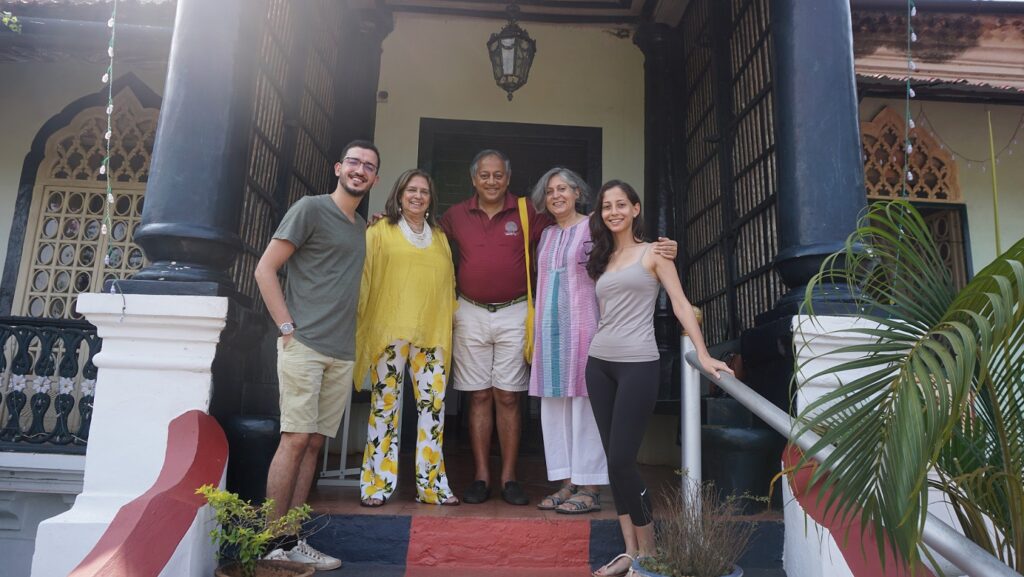

You can book your stay at the Figueiredo House here: https://www.figueiredohouse.com/
[1] Dale Luis Menezes, Christians and Spices: A Critical Reflection on Indian Nationalist Discourses in Portuguese India, Práticas da História: Journal on Theory, Historiography and Use of the Past, no. 3 (2016): 29–50.
![]()
![]()


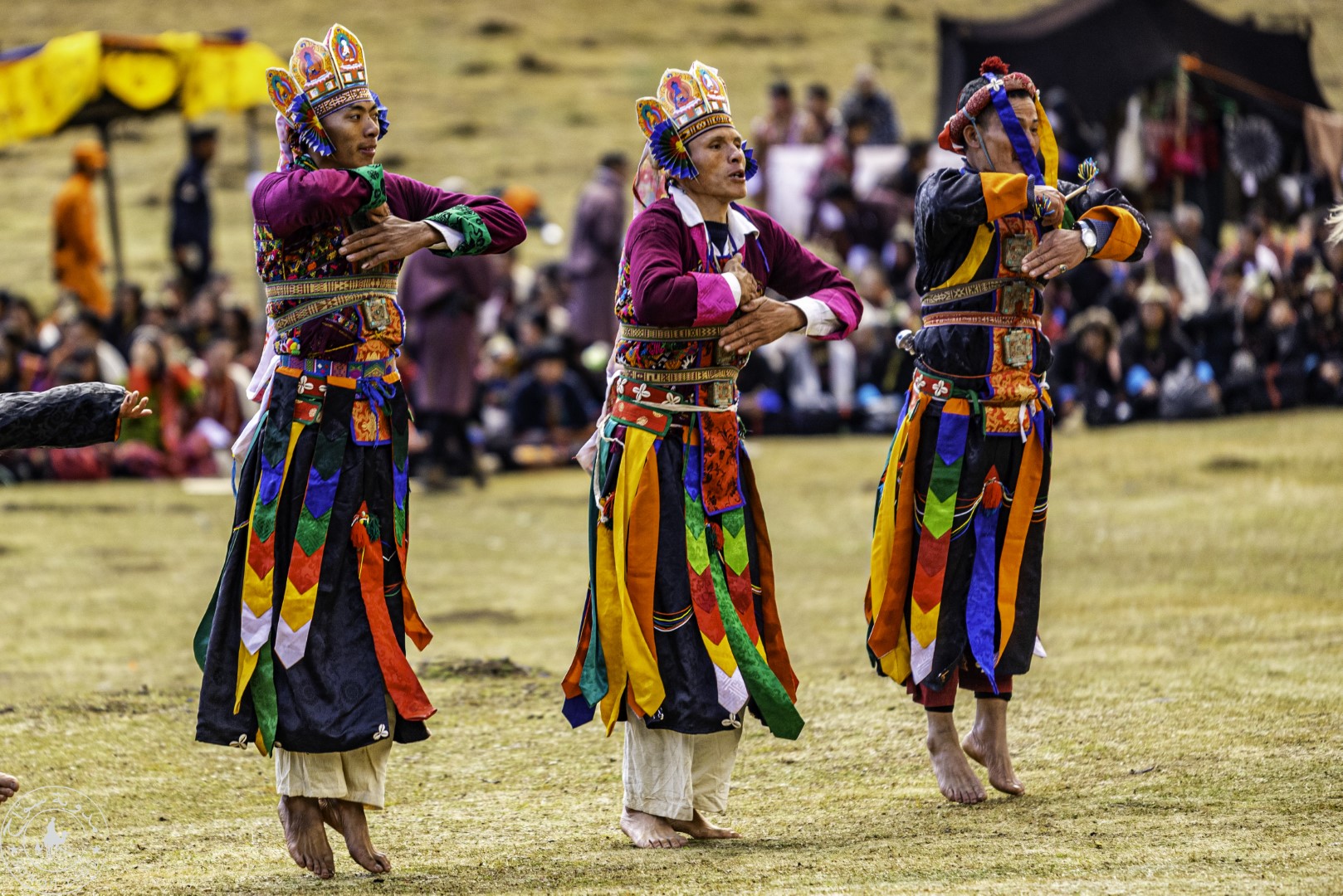


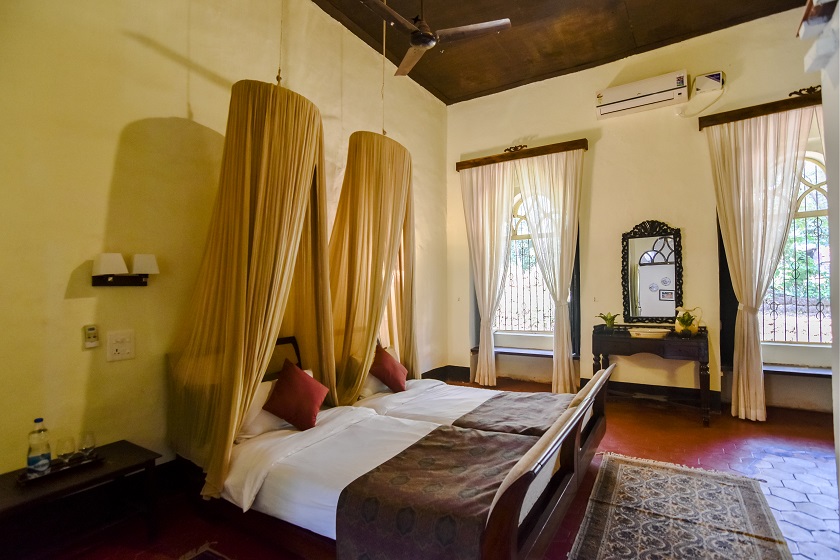
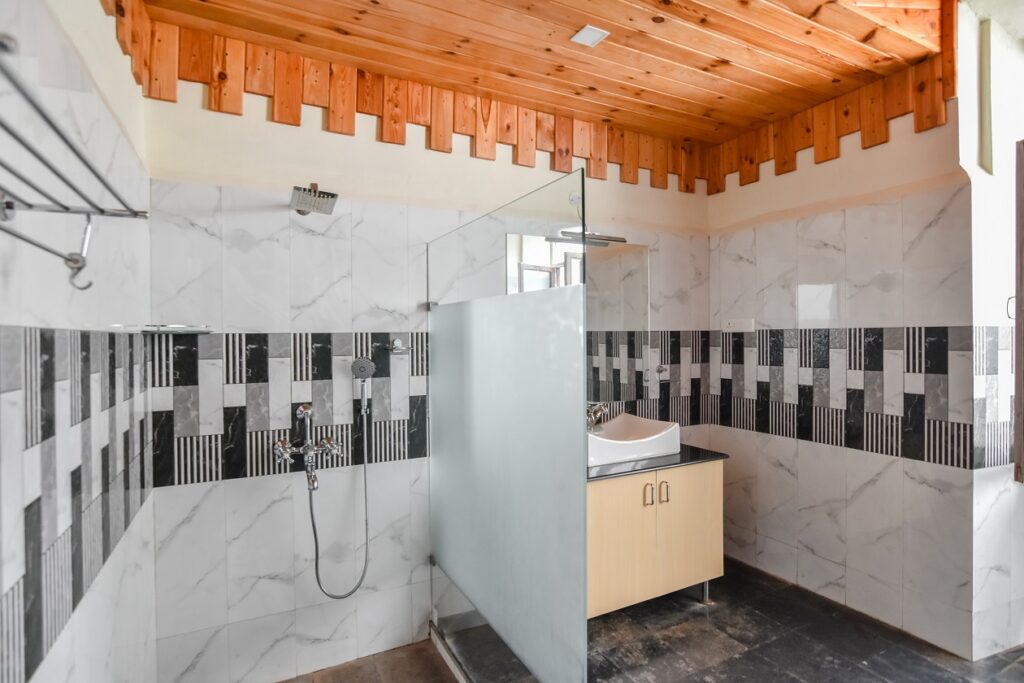
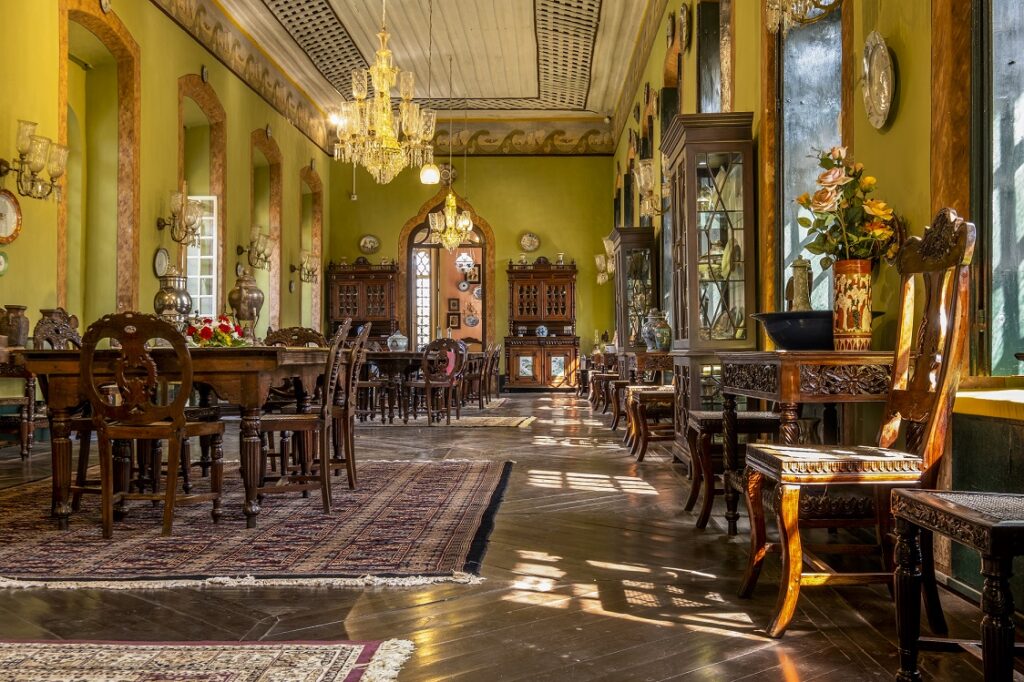
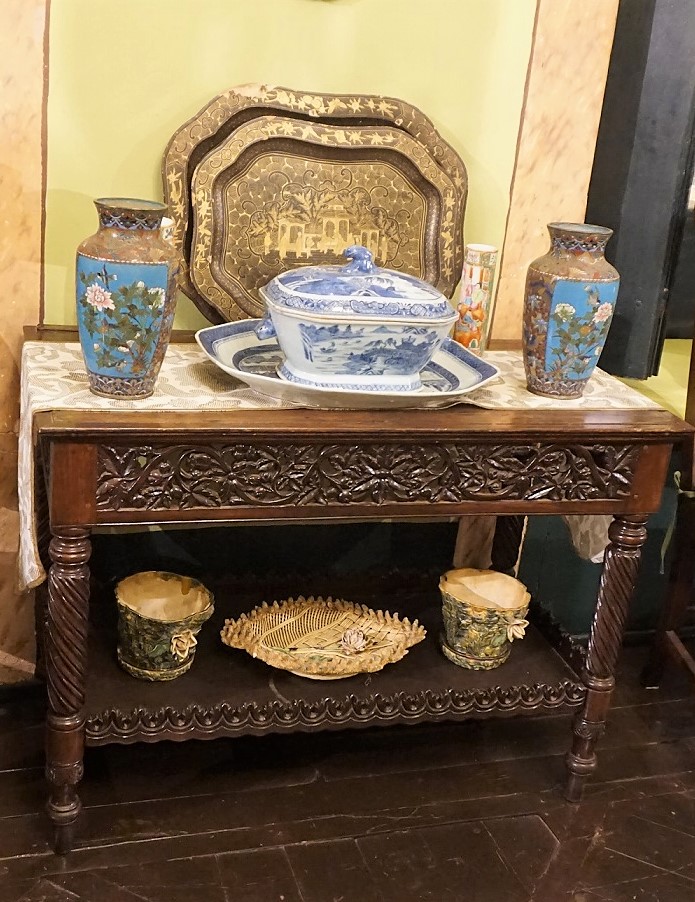
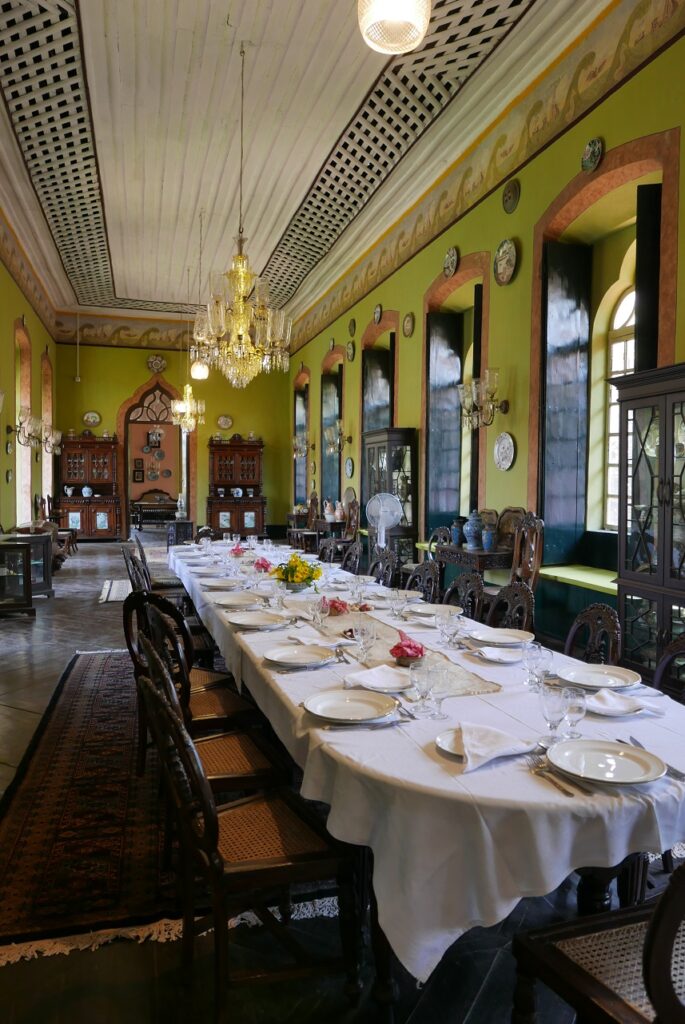

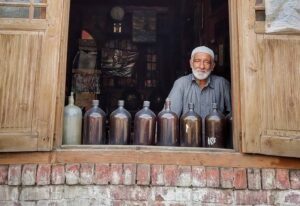
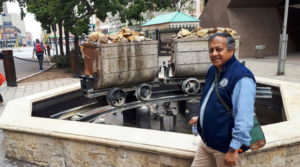
Your visit is beautifully captured in this piece!
Thank you 🙂
Thank you so much for reading Desmond 😊🙏 It was great that you could join us for that final Night In the Museum and the wonderful dinner Fatima served us afterwards 😎
It is so nice to learn more of your culture and the influence of Portugal on it, especially when well-told by you. Thanks for the tour, Ranjan Pal.
Thanks so much Richard 🙏 😊 Yes the close to 500 years of Portuguese reign in a small corner of India pales in comparison to the much wider influence of British rule but in Goa it was enormously significant in terms of shaping its destiny and its culture